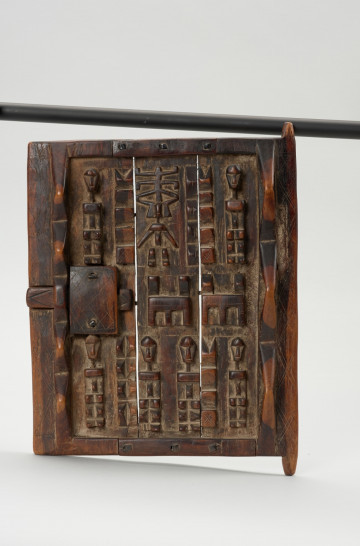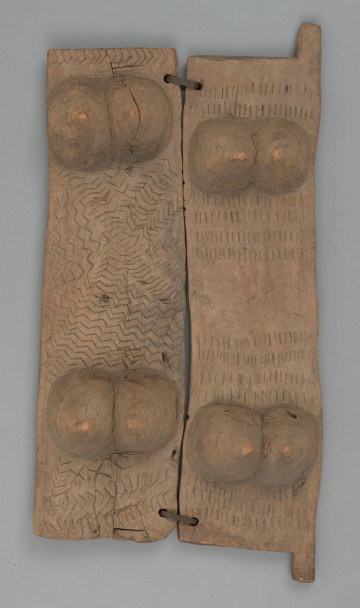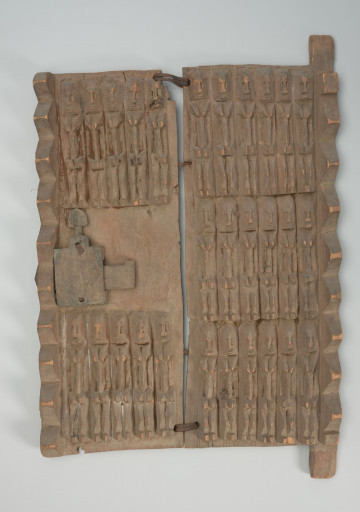
Granary door
między 1951 — 1989
National Museum in Szczecin
Part of the collection: Collection of Dogonian art
Dogon granaries (guyon, singular: guyo) are usually located inside the homesteads, which are the centre of family life. These homesteads often change shape. There are two reasons for that: the perishable construction material and the constant growth of the family. The homesteads are built of unfired clay, which is easily damaged. After the rainy season, the numerous damages often must be repaired. Sometimes the damage is so extensive that a new farm building is erected on a different site. Changes and alterations are also facilitated by the growth of the family, for example, the birth of new children or the arrival of a new wife to the patriarch ginna bana or one of his sons. The only constant element of the homestead is ginna, fixed in the same shape repeatedly. Its only changing detail is the façade, on which, over the years, new niches dedicated to departed ancestors appear.Each adult inhabitant of the homestead is entitled to have his own granary which, apart from storing agricultural produce, mainly grain, is also used to store personal trinkets. Male granaries are called guyo-ana and female ones are called guyo-ya. The interior of the granary is referred to by the Dogon as the belly of the world and is divided into several parts. The smaller granaries have four segments inside, while the larger, storied ones have eight. It refers to the eight mythical ancestors representing four pairs. The doors are made of two boards connected with iron clamps. They are decorated with images of ancestors and depictions of women's breasts, symbolically referring to the fertility of women and the cultivated land. The door has a hinge system called a pole with two pivots: upper and lower. They are always opened to the outside.
Ewa Prądzyńska
Author / creator
Dimensions
cały obiekt: height: 54 cm, width: 39,6 cm
Object type
farm building
Creation time / dating
Creation / finding place
Identification number
Location / status

między 1951 — 1989
National Museum in Szczecin

między 1970 — 1980
National Museum in Szczecin

między 1951 — 1984
National Museum in Szczecin
DISCOVER this TOPIC
Museum of King Jan III's Palace at Wilanów
DISCOVER this PATH
Educational path